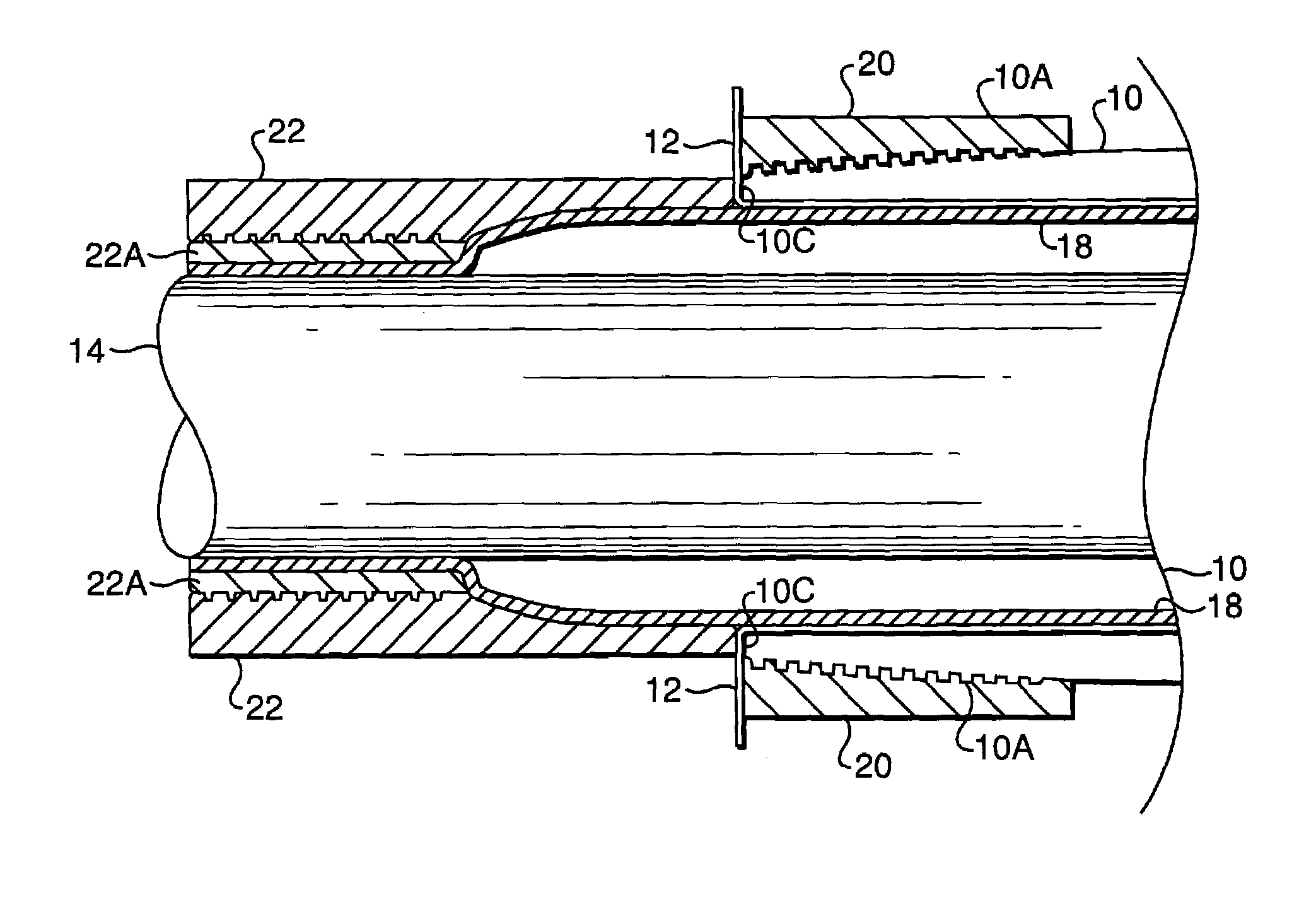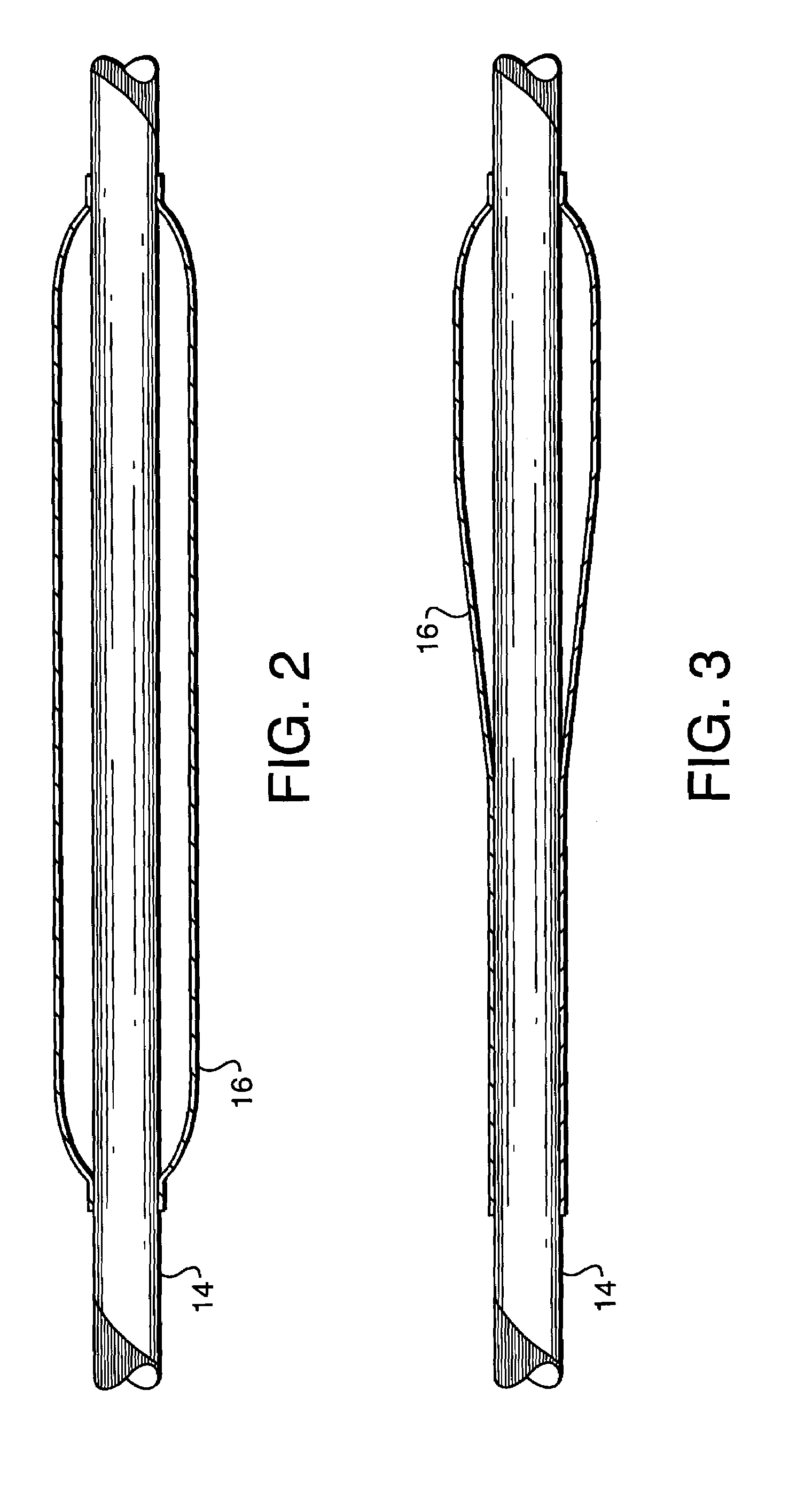Composite liner for oilfield tubular goods
a technology for oilfield tubular goods and composite lines, which is applied in the direction of hose connections, hollow wall articles, manufacturing tools, etc., can solve the problems of inability to meet the needs of oilfield tubular liners, etc., to achieve the effect of increasing pressur
- Summary
- Abstract
- Description
- Claims
- Application Information
AI Technical Summary
Benefits of technology
Problems solved by technology
Method used
Image
Examples
Embodiment Construction
[0027]A preferred embodiment for a composite liner of the invention includes a fiber “preform”. The fiber can be glass, aramid, carbon / graphite or combinations thereof. The fiber can be woven or can be in the form of a needlefelt such as a product made by Textech, N. Monmouth, Me. Generally the preform is in the shape of a tube. The preform is impregnated with a resin such as high-ductility amine-cured epoxy. The resin-impregnated preform is impressed onto the inner wall of a joint of oilfield pipe such as casing or tubing, is formed and bonded to the ends of the joint and is then cured in place on the inner surfaces of the joint of oilfield pipe, such as tubing or casing.
[0028]The preferred embodiment of the composite liner will provide excellent resistance to oilfield chemicals, good performance in hot / wet environments prevalent in oilfield applications, and high working temperatures. The composite liner will have low void content, preferably less than about 3%, as voids in a comp...
PUM
| Property | Measurement | Unit |
|---|---|---|
| elongation | aaaaa | aaaaa |
| temperatures | aaaaa | aaaaa |
| thickness | aaaaa | aaaaa |
Abstract
Description
Claims
Application Information
 Login to View More
Login to View More - R&D
- Intellectual Property
- Life Sciences
- Materials
- Tech Scout
- Unparalleled Data Quality
- Higher Quality Content
- 60% Fewer Hallucinations
Browse by: Latest US Patents, China's latest patents, Technical Efficacy Thesaurus, Application Domain, Technology Topic, Popular Technical Reports.
© 2025 PatSnap. All rights reserved.Legal|Privacy policy|Modern Slavery Act Transparency Statement|Sitemap|About US| Contact US: help@patsnap.com



